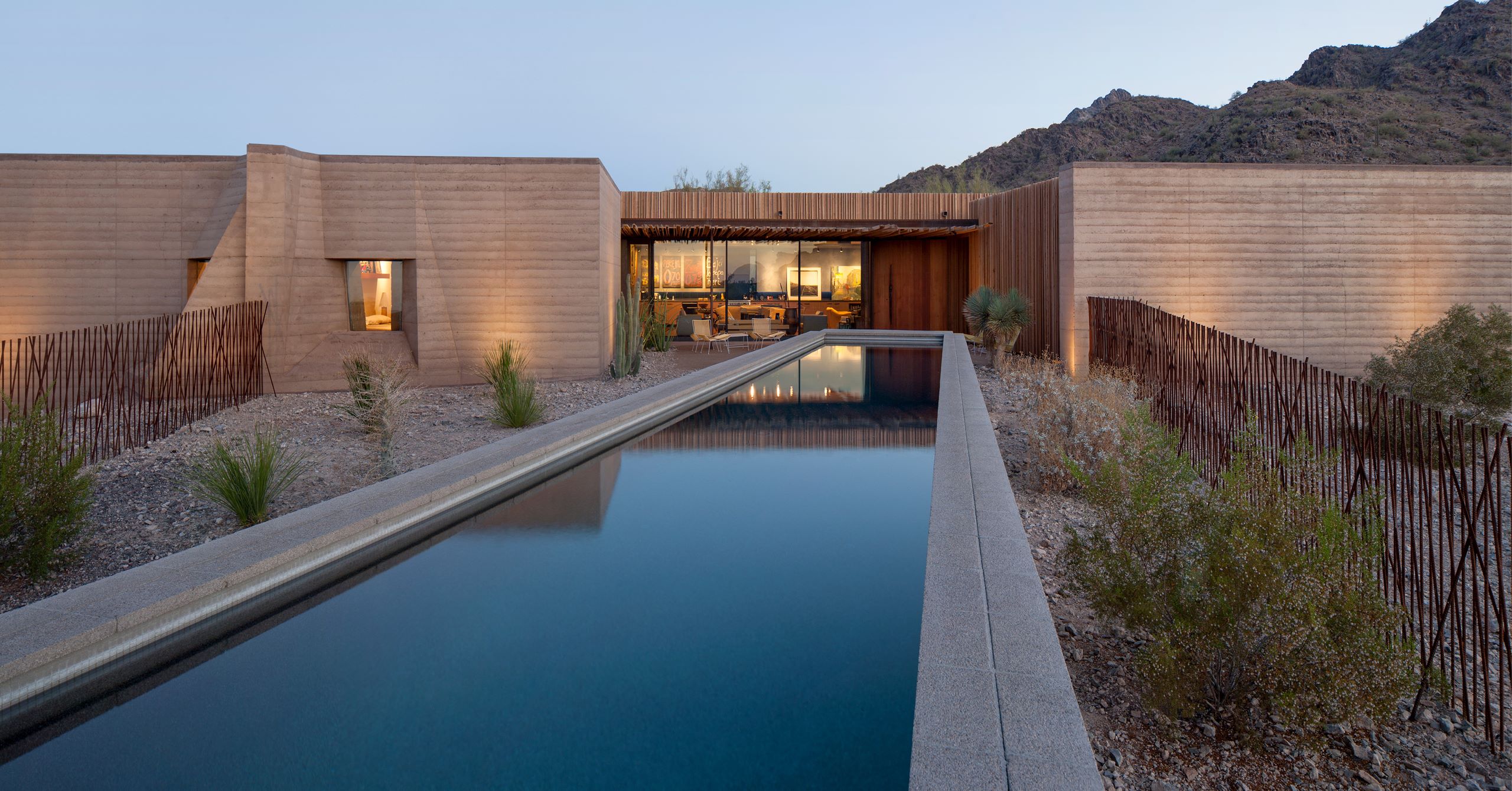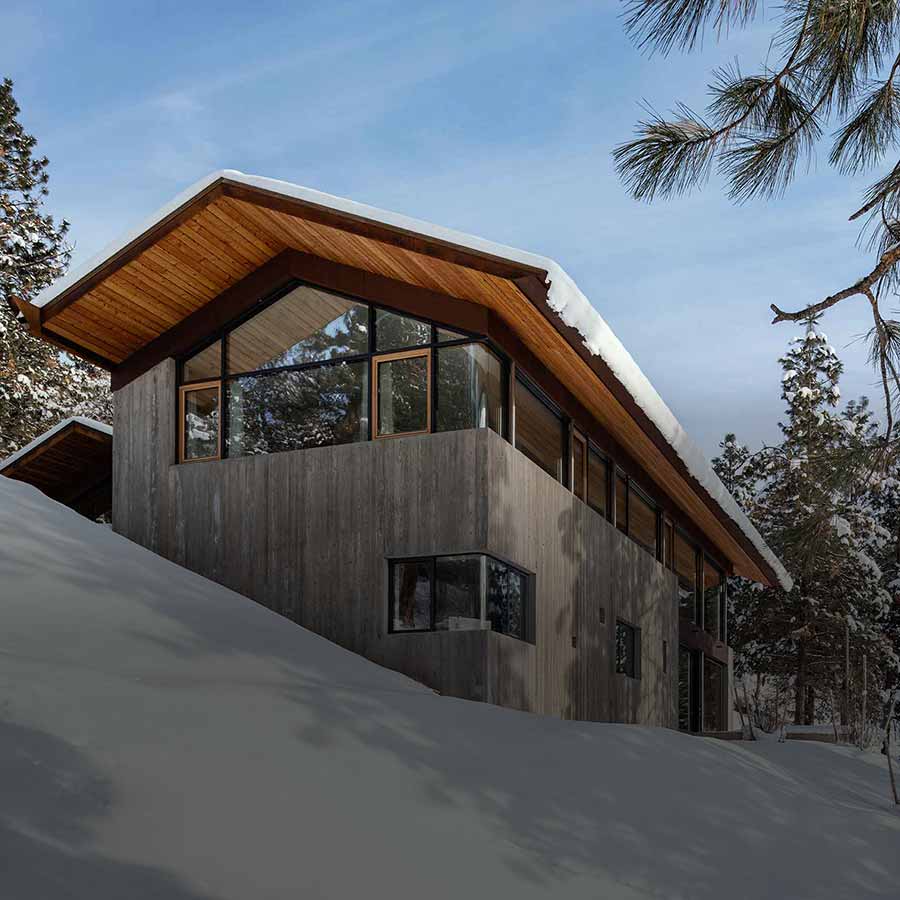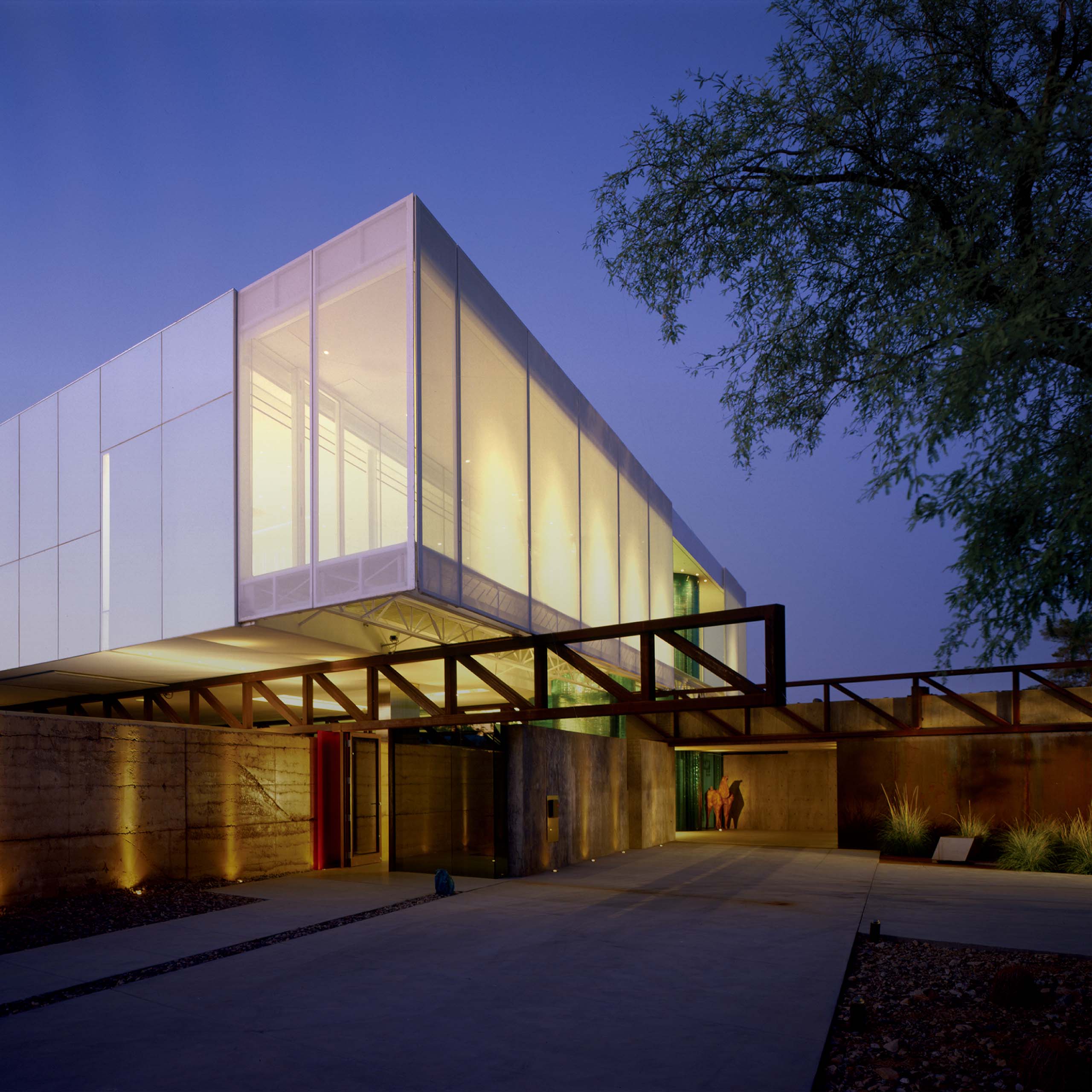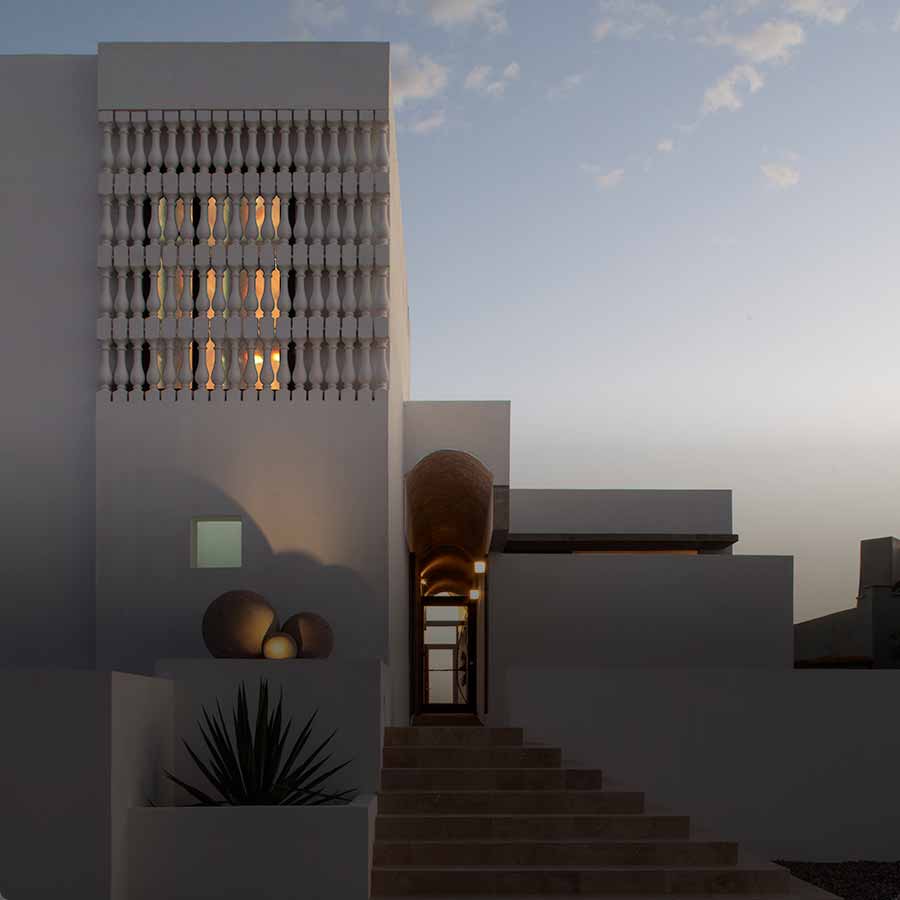
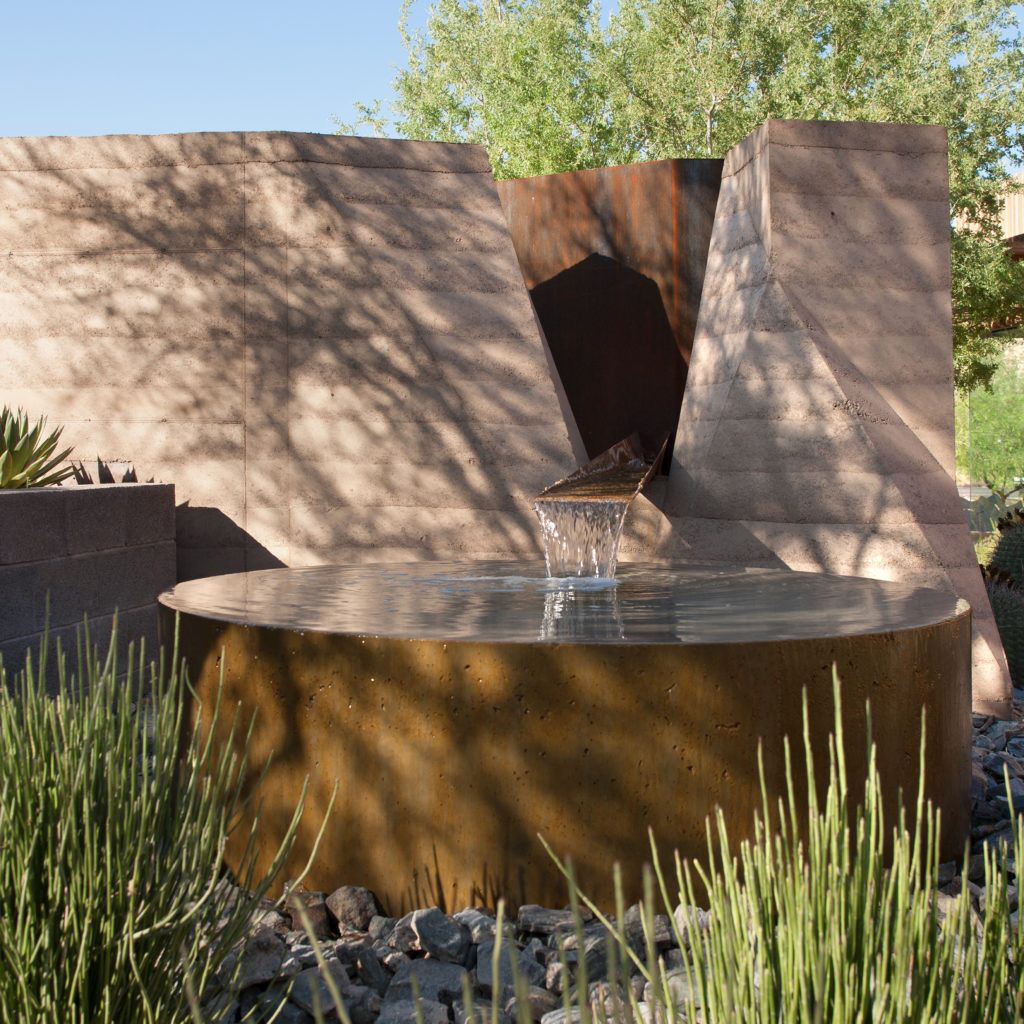
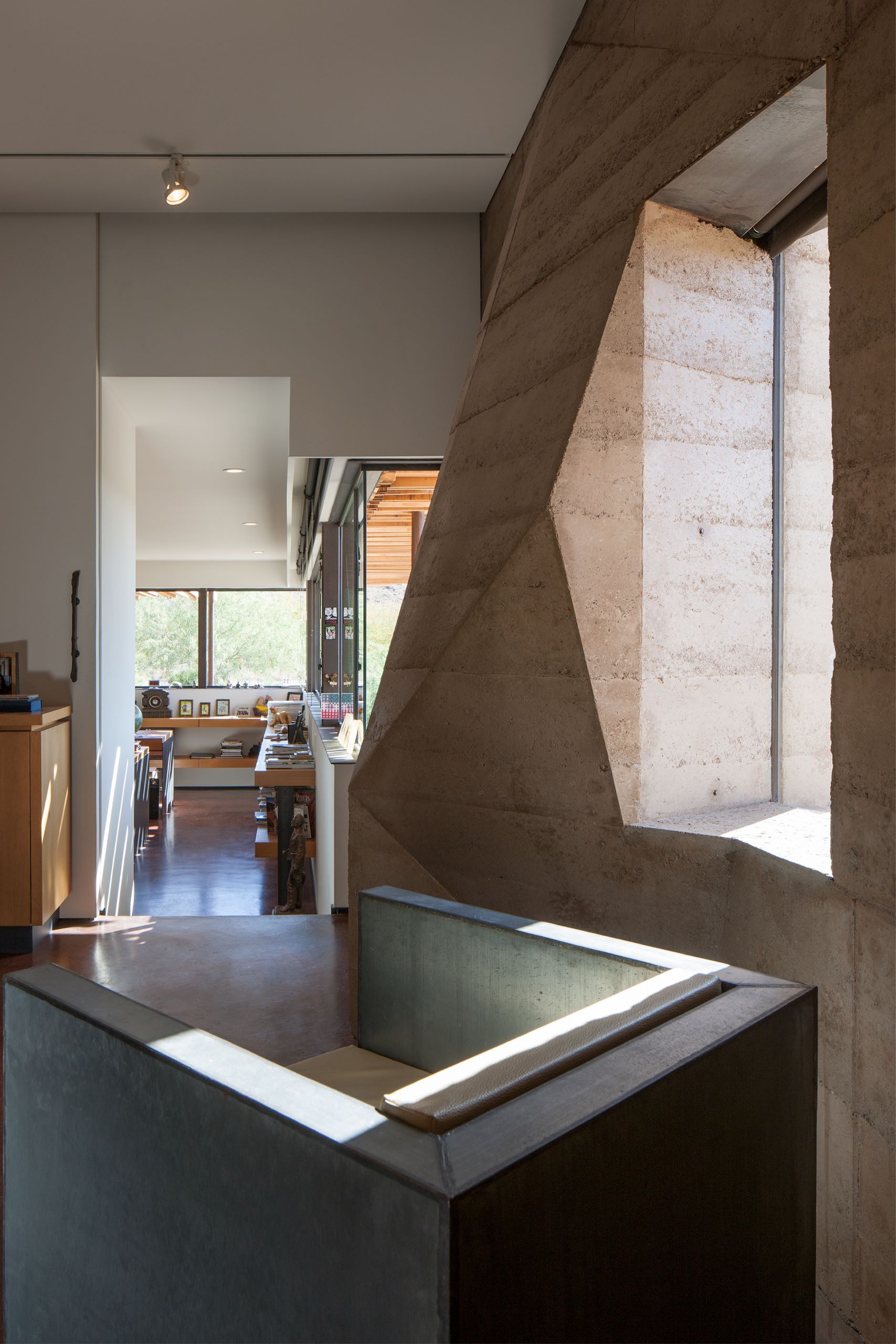
A house of mud and shadow
Reflecting on what he was looking for in the design of his new private home at the base of the Phoenix Mountains, Michael Lacey requested a home built of “mud and shadow.” On the crest of a hill, his home acting as a retreat from the contemporary world and a respite from the elements—a desert outpost.

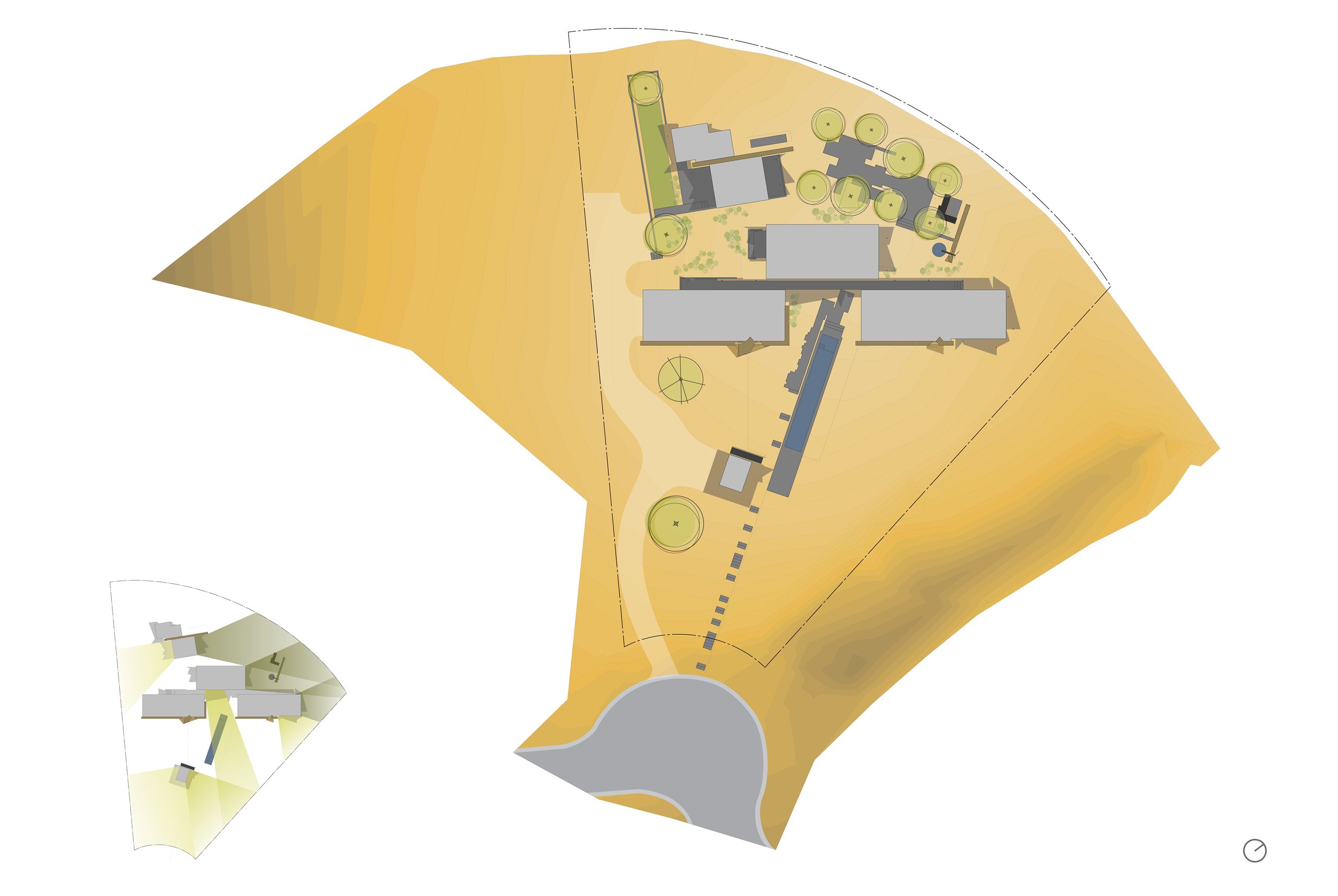
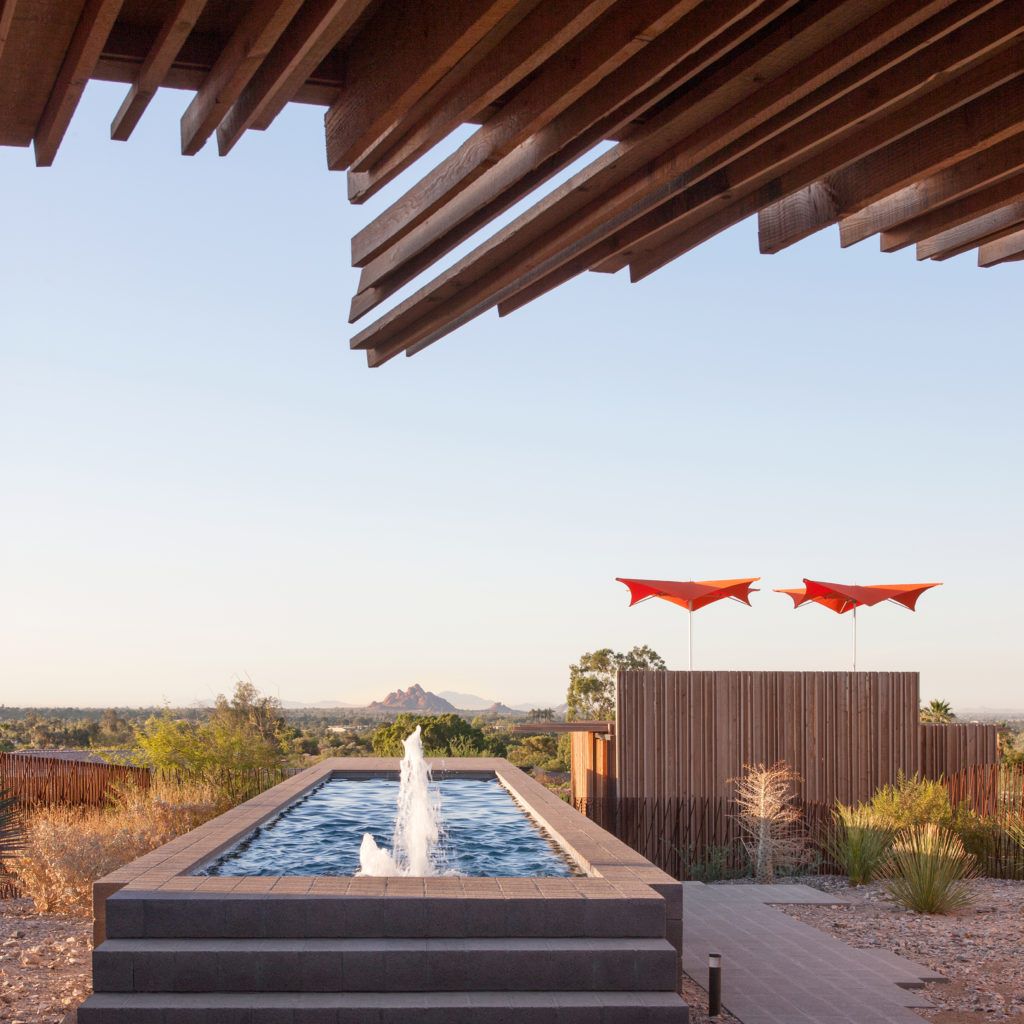
Seventy years prior on a nearby, nearly identical hill, the Rose Pauson House by Frank Lloyd Wright burnt down just six months after construction, though the stone foundations remained for decades later as a landmark in the desert. During its brief life, one could look out from the living room windows and see the same hill that Michael would choose for his own home. The Desert Outpost ties together these moments in time, recalling the visage of those ruins through an ancient technology that raises the building directly from the earth.

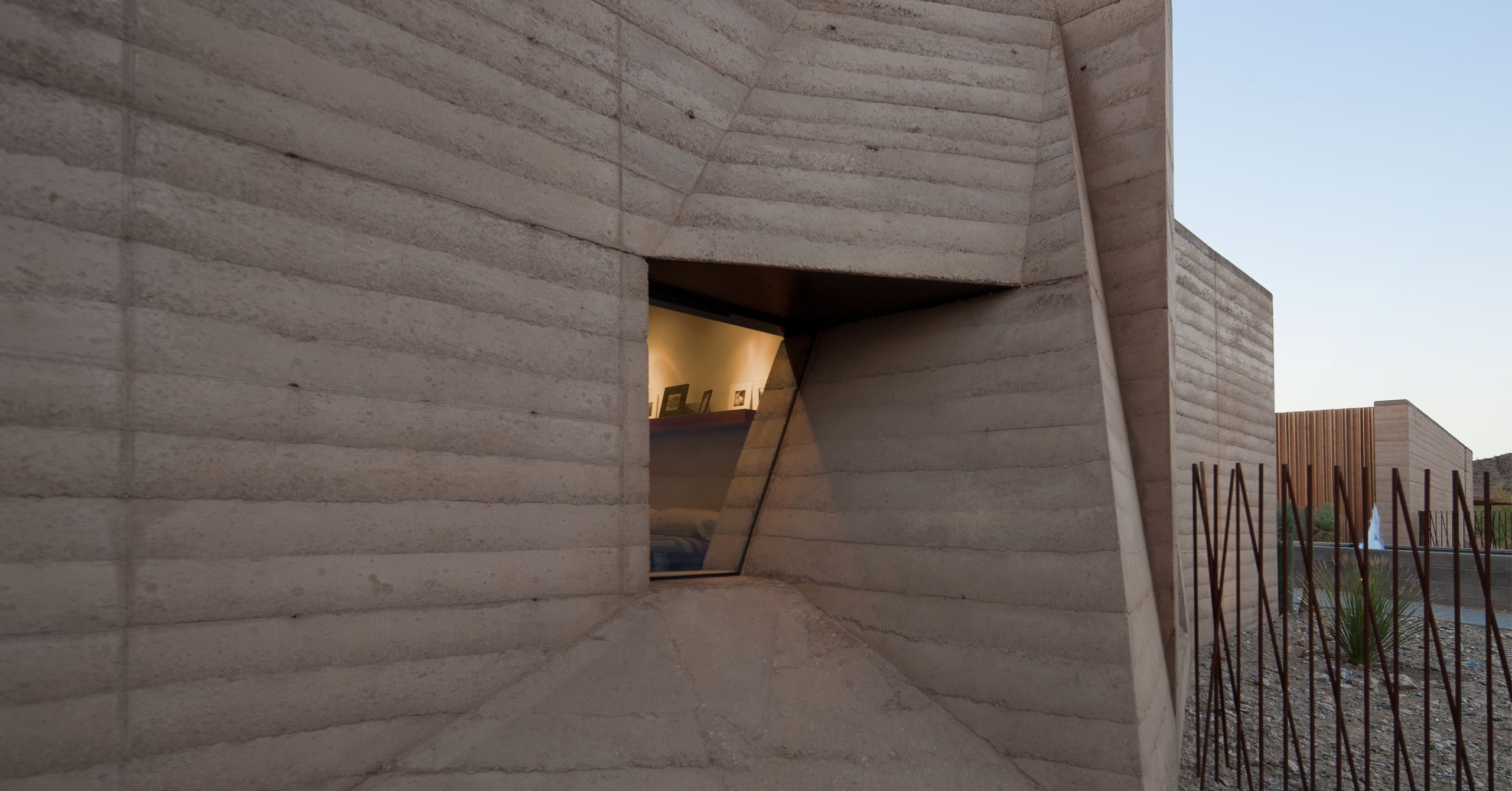


The sloping site is accentuated by low, linear forms striking across the horizon and against the hillside. Walls formed of rammed earth—a material like concrete made of compacted dirt—frame the main spaces and embody the natural and monolithic essence inherent to Michael’s original request. These walls stand in stark contrast to the delicate screens of Douglas Fir set between them. Rarely used in the desert due to its quick response to the dry air and intense sun, the wood will weather to a worn gray far faster than the slow patina of the walls. This slow return to the earth at the hands of time and nature is is inspired in part by the work of artist Andy Goldsworthy.
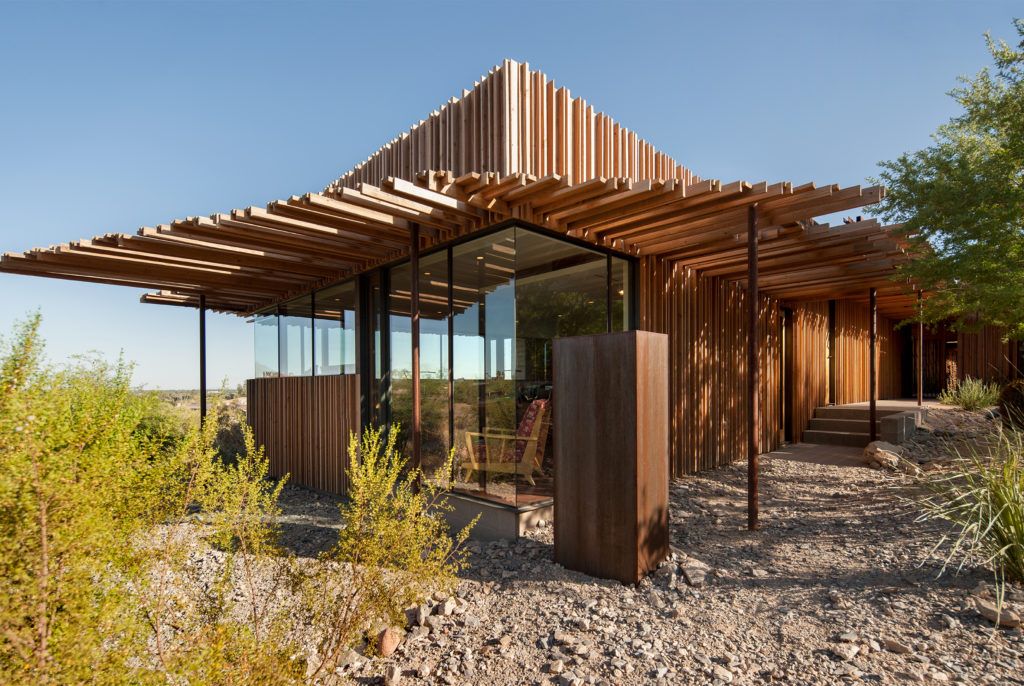
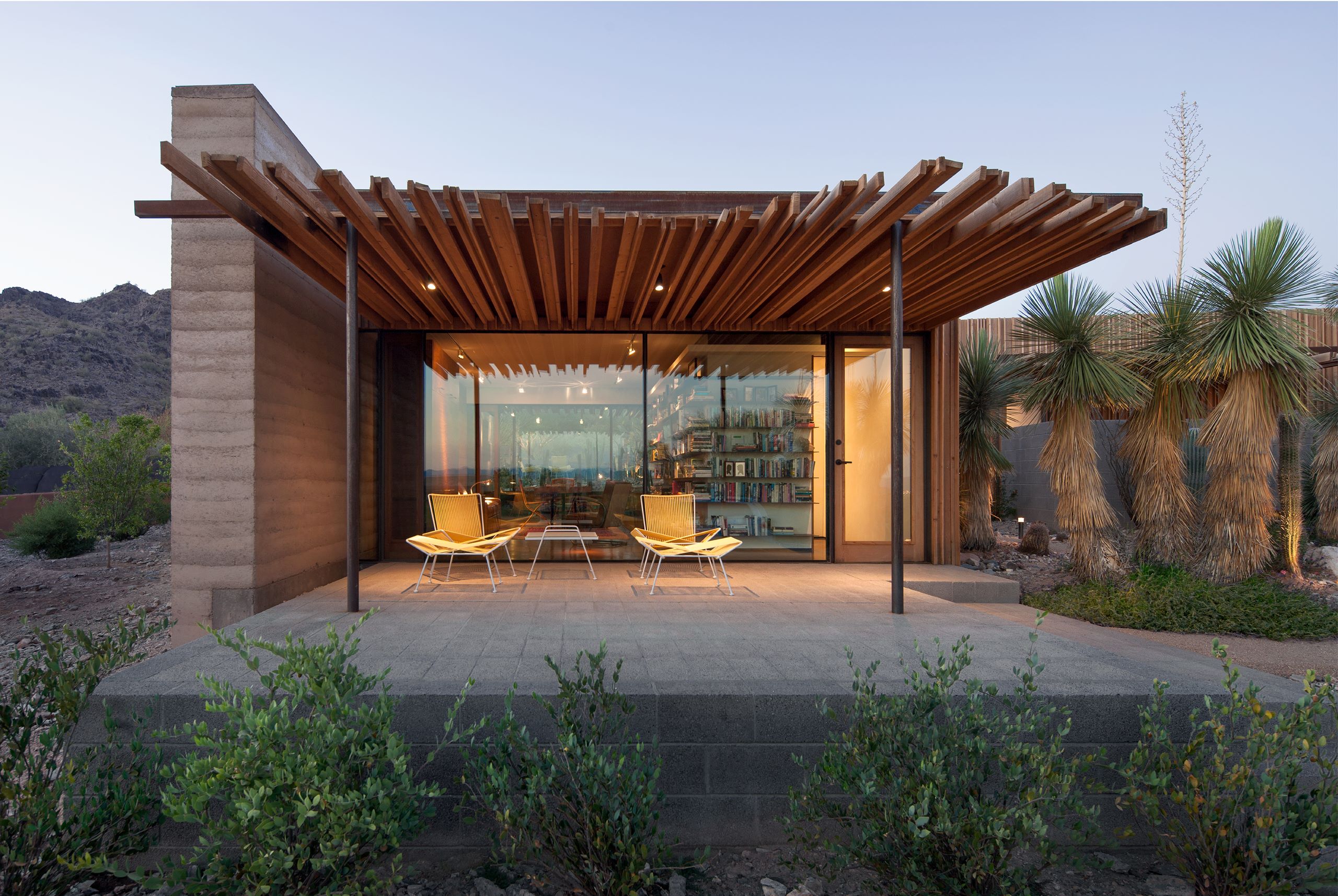
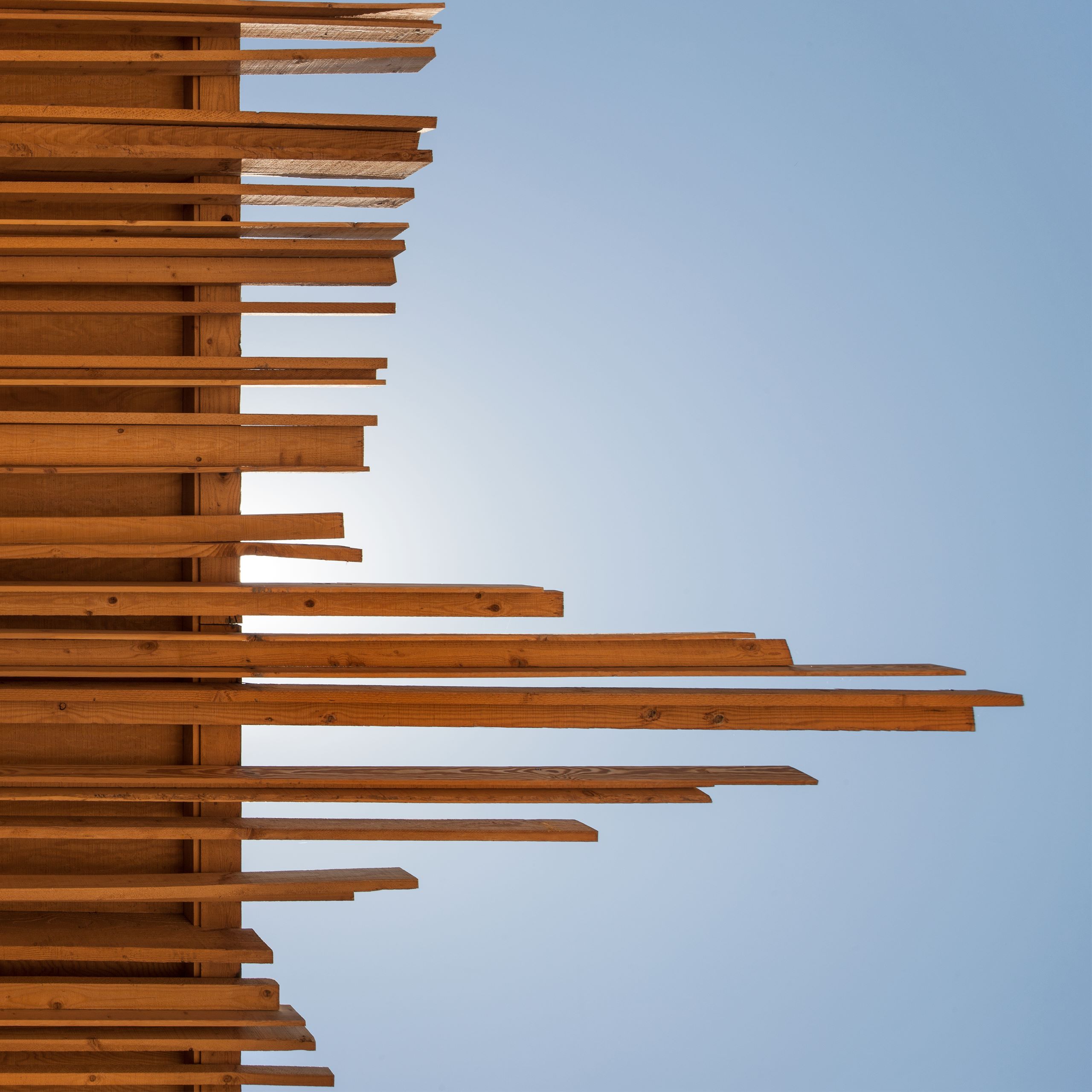
The home is a series of simple rectangular boxes set along two exterior paths. One path, starting at the street, leads to the entry and aligns with the Papago Mountains in the distance. In another tribute to the Pauson House, the second path links the main living spaces in a cluster around a central exterior space, recalling the form of a traditional desert hacienda. Each box represents a different use—living, sleeping, playing, and working—that are occupied throughout the day, moving between them beneath the wooden canopy.
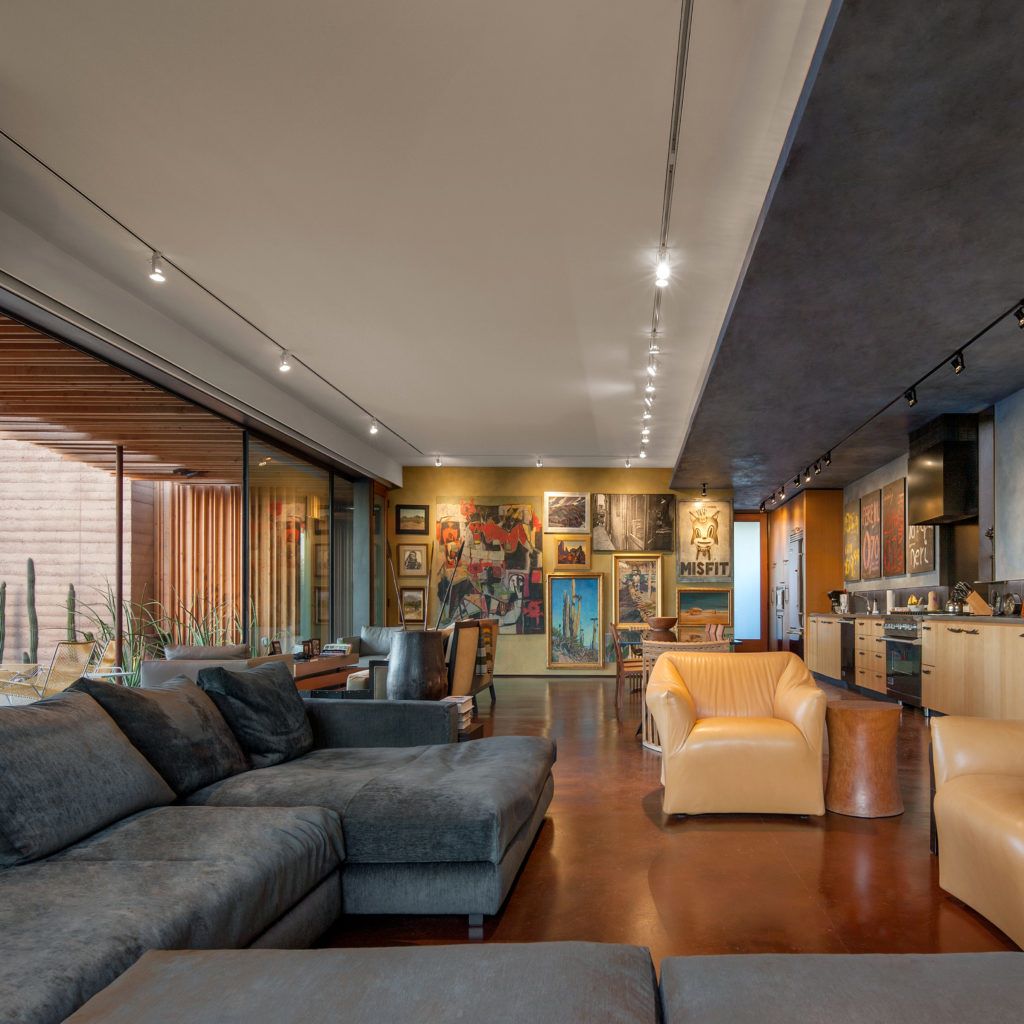
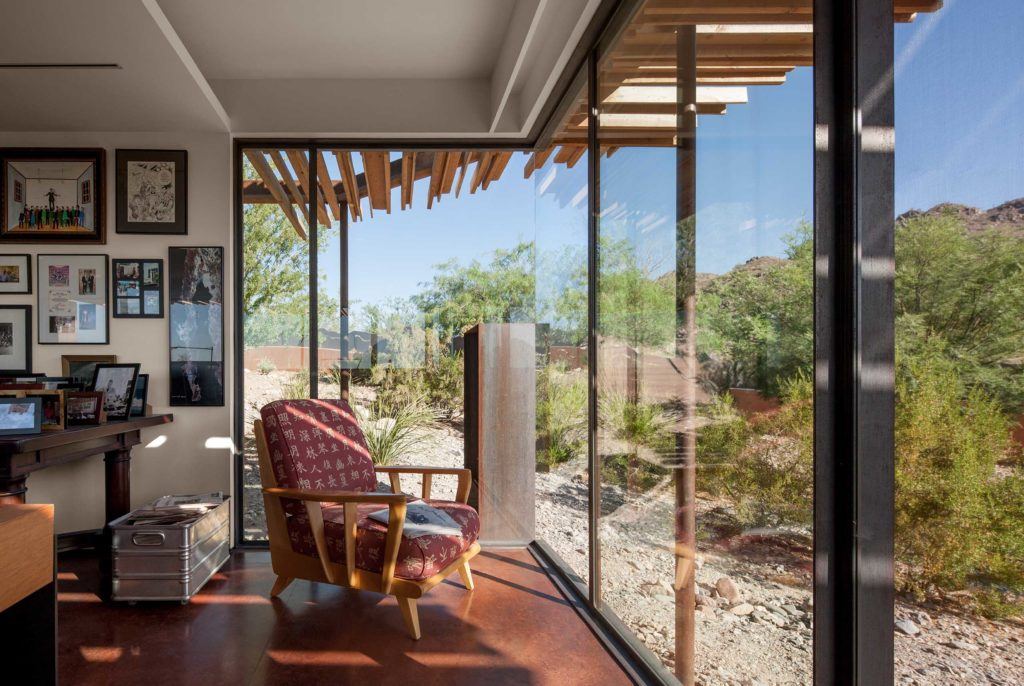
Interior spaces connect to the desert site and the vistas beyond through full-height glass windows. Abundant daylight, filtered by wooden screens, washes the interior walls with a warm glow. The rooms are sheltered by the building form, deep in the apertures of the rammed earth walls or set back in the delicate shadows from the wood canopy above. Looking back toward the entry, the pool aligns with the far off mountains and the sky reflects endlessly on the surface of the water: a refuge from the outside world is found.

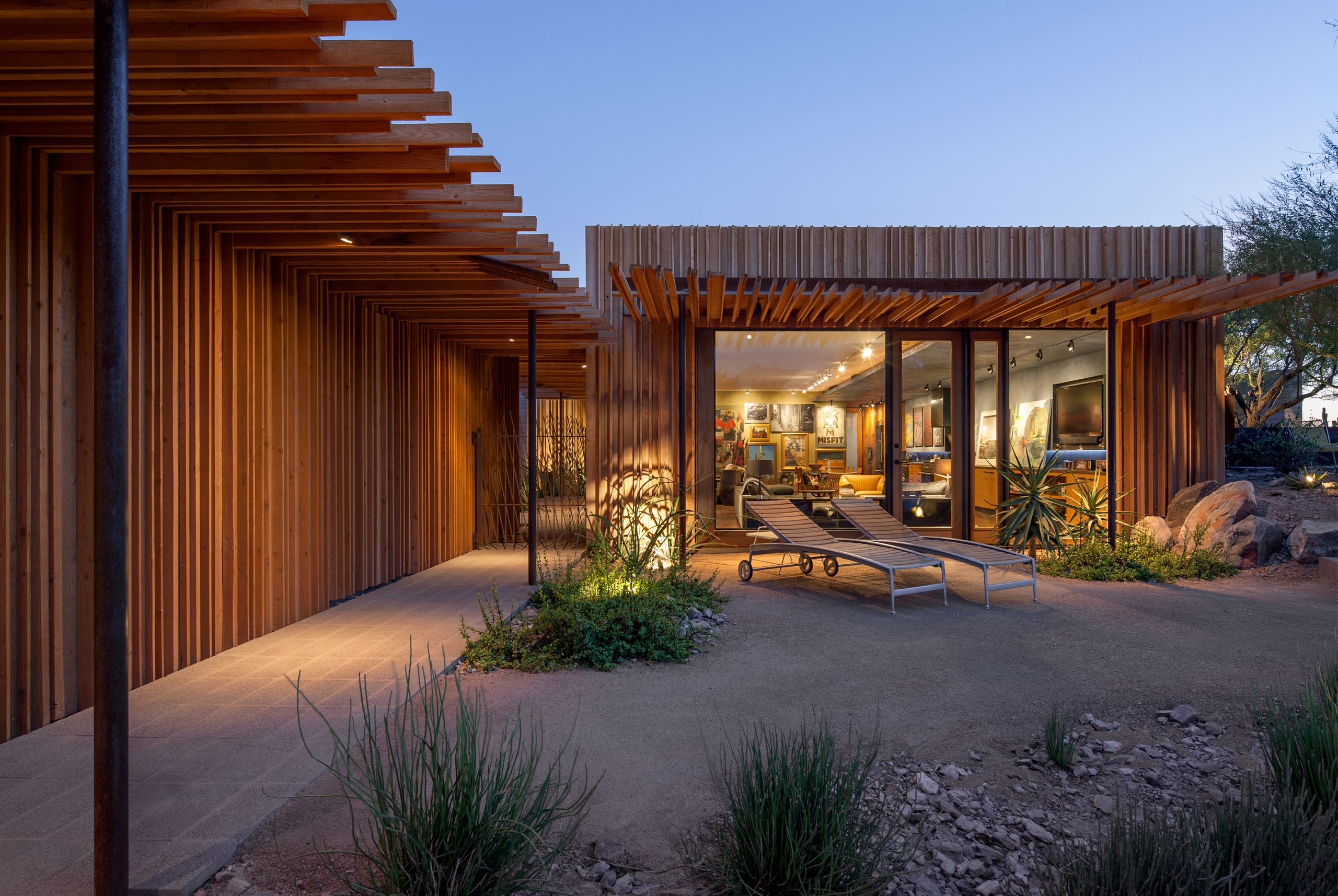
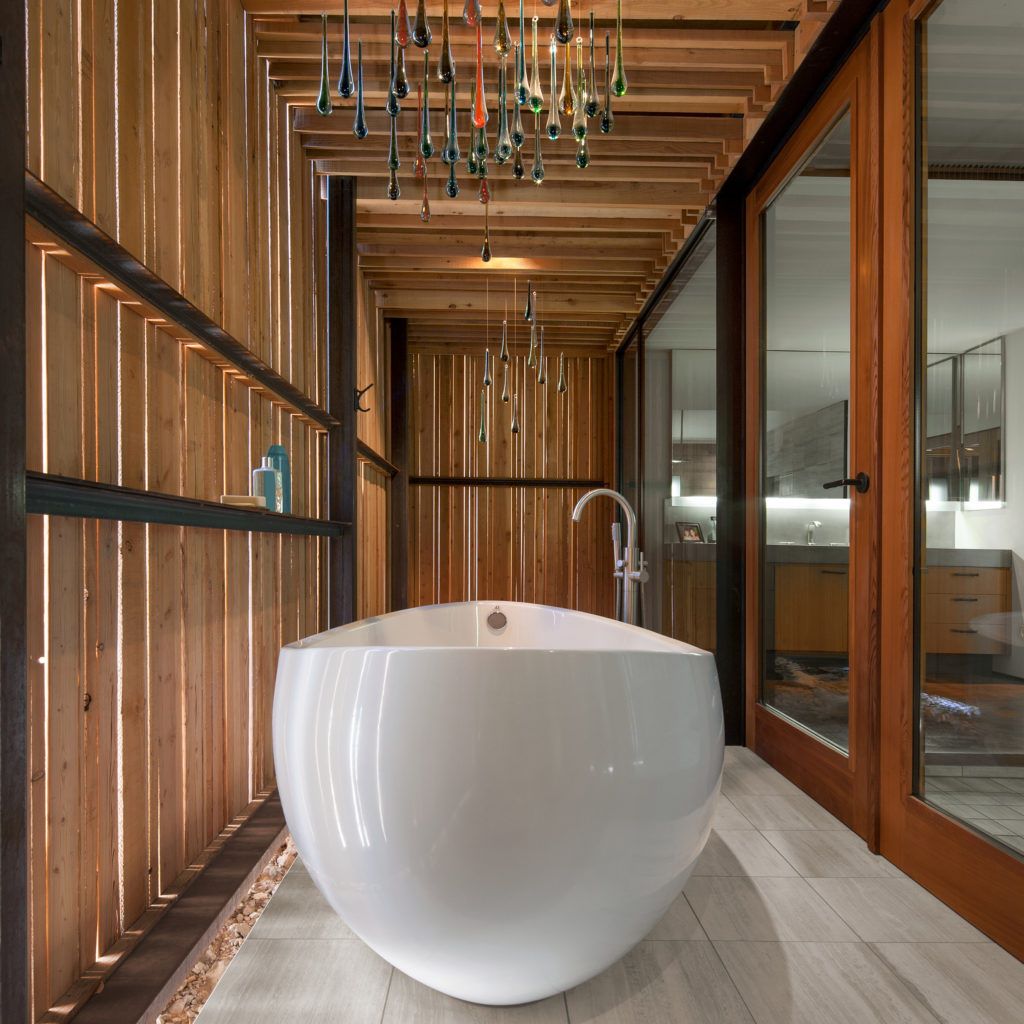
Shortly after construction completed, the homeowners’ association for the subdivision expressed in no uncertain terms that the earthy, unfinished nature of the Lacey House was indecent compared to the more conventional surrounding residences. Mr. Lacey purchased the remaining vacant lots of the subdivision adjacent to his home, securing majority control of the HOA and ensuring that the Desert Outpost stands in repose.
